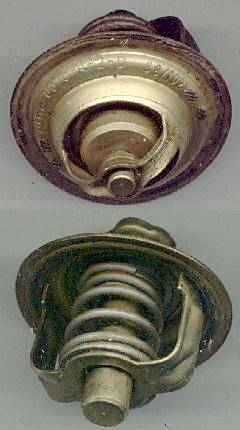
If you open the hood of your 1993 Toyota Corolla, you can find the thermostat by following the large, lower hose from the radiator. The end of the hose is attached with a clamp to the inlet side of the water pump. The thermostat is inside the metal housing attached to the water pump by two bolts. This thermostat is designed with a simple mechanism that helps control coolant flow for proper engine operation.
When you start the engine of your Toyota Corolla first thing in the morning, coolant in the radiator cannot go to the engine. As long as the engine is below operating temperature, the thermostat will remain closed, and coolant will flow only around the engine block, cylinder head and intake manifold. As the engine reaches operating temperature, the thermostat begins to open until coolant can circulate freely between the radiator and the engine. As the engine cools down, the thermostat closes again, and the cycle repeats itself.
The thermostat has a wax pellet inside a very small cylinder-piston assembly in the middle. When coolant heats up, the wax expands inside the cylinder-piston chamber, which pushes against the outside spring to open the valve, allowing coolant at lower temperature from the radiator into the engine.
Thermostats may come in different designs. For example, a bypass thermostat has an extra valve to allow all the hot coolant in the engine into the radiator. A conventional thermostat allows most of the hot coolant to travel. The bypass thermostat allows all of the hot coolant to cool down. A normal thermostat rating is designed for temperatures between 180 F and 195 F. Thermostats with higher temperature ratings are used in newer vehicles to reduce exhaust emissions and better combustion efficiency.
One of the main concerns in the use of automobile thermostats is air pockets that could form in the thermostat housing. An air pocket could disturb proper coolant flow. To avoid this problem, thermostats come with a jiggle valve fitted into a hole on the thermostat itself that can help break air bubbles in the coolant stream as it goes through the thermostat housing.
A thermostat should be checked and replaced at manufacturer recommended intervals. The cooling system is designed to minimize engine wear and keep it from self-destructing. A stuck thermostat in the closed position may cause the engine block to overheat and melt or crack open; a thermostat stuck in the open position may prevent the engine from reaching operating temperature, accelerating internal engine wear.